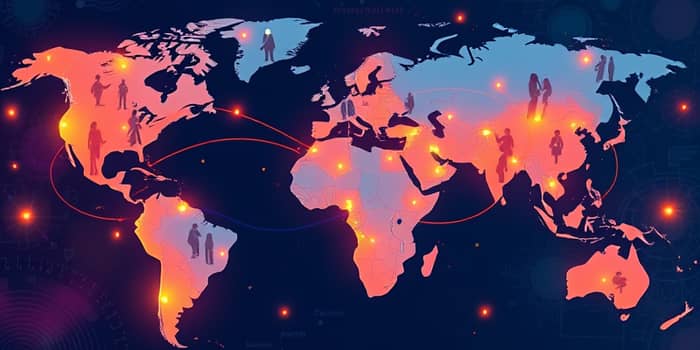
As global borders evolve and economies demand new skills, the mid-2020s have ushered in a transformative era for talent movement. This article explores the driving forces reshaping migration, its economic outcomes, and the future of a borderless workforce.
International migration has surged to unprecedented levels. By the end of 2024, International migrants reached 304 million worldwide, compared to 173 million in 2000. Conflict, environmental change, and economic opportunity have fueled a displaced population of 122.1 million as of April 2025, including a significant proportion of highly skilled talent.
Several factors converge to propel the Great Reshuffle:
The makeup of labor forces is shifting. In the United States, Foreign-born workers now comprise 19% of the labor pool, up from 10% in 1994. Among college-educated workers, 22% are immigrants, and 26% of practicing physicians are foreign-born. Globally, 5.4% of degree holders migrate abroad, compared to 1.8% of high school graduates.
Different industries rely heavily on migrant expertise to fill critical gaps and foster growth. The table below highlights key sectors and their economic contributions.
Traditional immigrant hubs such as California, New York, Florida, and Texas continue attracting skilled workers. Yet non-coastal regions in the Midwest and Southeast are emerging as new centers for migrant labor, especially in manufacturing and agritech.
Migrants also fuel talent clusters in STEM and creative industries. Patent filings from immigrant-led teams have tripled since the late 1970s, highlighting the crucial role of diversity in innovation ecosystems.
Nation-states now compete fiercely for high-skilled immigrants, tailoring policies to attract STEM graduates, entrepreneurs, and digital professionals. Efforts are underway to build a global framework for talent governance emphasizing equity and knowledge exchange.
Regional flows are diversifying as geopolitical realignments shift origin and destination patterns. The OECD reported 6.2 million new permanent immigrants in 2025, marking a 15% rise over 2019 figures and underscoring the resilience of migration amidst global uncertainties.
The digital sector will drive most job growth through 2030. Nearly half of global GDP is tied to digital services and platforms, and remote work models enable professionals to contribute cross-border without relocating.
Nearshoring and e-migration are on the rise: over 2.2 million Latin American remote workers served multinational companies in 2023 while remaining in their home markets. Automation threatens to replace 30% of existing roles but is projected to create 130 million new positions, particularly in AI, data science, and cybersecurity.
Global merchandise trade expanded from $63 billion in 1950 to $33 trillion in 2024, underpinning a robust skill demand. Migrant labor supports economic growth, stabilizes labor markets, and drives innovation—critical in aging societies and regions experiencing workforce shortages.
As the digital economy edges toward $53.9 trillion in value by 2025, nations with progressive migration policies will attract the brightest minds, fueling competitive advantages in technology, healthcare, and advanced manufacturing.
Despite the benefits, policy volatility remains a major risk. Sudden changes in visa regimes or refugee admissions can disrupt labor markets and disincentivize long-term investment in human capital.
Some large economies, despite scale, face gaps in top-tier talent per capita. Effective integration requires robust institutional frameworks, targeted training programs, and public-private collaboration to ensure migrants realize their full economic potential.
In this era of the Great Reshuffle, understanding and adapting to global talent flows will determine which nations and industries thrive. By embracing innovative policies, fostering inclusive growth, and investing in human capital, the world can harness the vast opportunities presented by an increasingly mobile and digital workforce.
References













